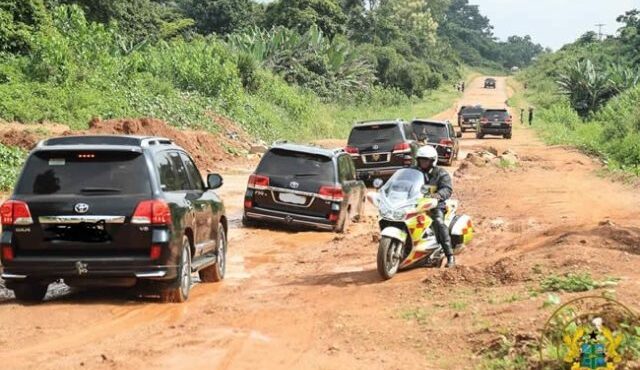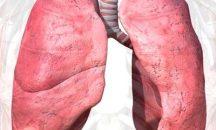‘Bad roads, deadly car tyres’(2)

• Our road could be discribed as death trap
[This is the final part of the article we carried on page 14 of The Spectator on Saturday, March 11, 2023. The first part of the article basically talked about the vital part of our road safety that we so often take for granted. Below is the rest of the article]
ii. Balance & Alignment: This ensures the safety of the driver and the performance of the vehicle.
Unbalanced tyres cause road vibration, which leads to driver fatigue, premature tyre wear. Tyres should be balanced when they are mounted on wheels for the first time or when they are remounted after a repair. They should be rebalanced at the first sign of a vibration or shimmy, and should be balanced at least once a year, regardless. A vehicle is said to be properly aligned when all suspension and steering components are sound and when tyre and wheel assemblies are running straight and true. Proper alignment is necessary for even tread wear and precise steering.
iii. Regular Rotation: Regular rotation is necessary to maintain even tread wear.
There are several methods of rotation. For most vehicles on the road, tyres from the rear axle are moved to the drive axle and crossed to opposite sides of the vehicle. The tyres from the drive axle are moved to the rear, but remain on the same sides. This is known as the “modified X” pattern.
For four-wheel-drive vehicles, it is recommended to switch all four tires, both from side-to-side and in axle position.
If no rotation period is specified on the vehicle owner’s manual for the manufacturer’s rotation recommendations, tyres should be rotated every 5,000 – 8,000 miles. Four-wheel-drive vehicles may require rotation as soon as every 4,000 miles.
iv. Visual Inspection/Tread Depth: Take a look at the treads for any sharp objects that may have punctured the tyres. Even if the puncture is not deep enough to flatten the tyres immediately, the cracking and pitting caused by smaller punctures can eventually worsen and lead to problems down the road.
Look at the wear patterns on the treads as well. Excessive shoulder wear can indicate under-inflation, while wear to the center of the tread can mean over-inflation.
Tyres have tread wear indicator bars moulded into the tread. When the tread is worn down to where you can see a solid bar of rubber across the width of the tread, it is time to replace the tyre. Another method for checking tread depth is to place a coin (20 pesewa) in the tread groove, a tyre with a good tread depth should admit about half of the width of the coin.
Tyre pressure should be checked when the tyres are cold, at least once a month and before long journeys or when carrying heavy loads.
v. Repairs: It is important to know when to repair a tyre and when it should be replaced. If a tyre loses its air pressure, it must be removed from the wheel for a complete internal inspection to be sure it is not damaged.
Most punctures, nail holes or cuts up to 1/4 inch can be repaired by trained Technicians as long as the damage is confined to the repairable tread. DO NOT repair tyres with tread punctures larger than 1/4 inch, or any sidewall puncture. Also, never repair tyres which are worn below 1/16 inch of tread depth.
Replacement of tyres: Tyre age is also crucial to safety on the road. Even though tyre life generally depends on service conditions and the environment in which tyres operate, some vehicle manufacturers recommend that tyres be replaced every four to six years regardless of use. Always, check the owner’s manual for specific recommendations for your vehicle.
Can you tell when your tyres were made? The date tyres were manufactured are indicated on the sidewall of the tyres in the form of four numbers usually preceded by the letters DOT. The four letters represents the week and year of manufacture. In most instances, there are 12 numbers after the DOT but the first four numbers are considered in identifying the age of the tyre. For example, DOT 1015 or DOT 1015 243/47R18 means 10th week of the year 2015.
KCE: Are you willing to meet with companies, groups of people etc. to promote this campaign on safe tires?
AA:Oh yes! I cannot keep this to myself. Safety on our roads is a shared responsibility and as long as individuals, groups of people and companies are willing to get more of such knowledge, I am willing to steer them towards road safety. I intend to work in collaboration with National Road Safety Commission too.
KCE: Is there a slogan on Tyre Safety you would like to leave us with?
AA:Tyre Smartness Saves Lives, Play Your PART (P- Pressure, A- Alignment, R- Rotation, T-Tread)!
KCE: What are your final words on tyre safety?
AA: We all sit in cars, be it our own or as passengers. Cars move with tyres and the safety of tyres plays a significant role in reaching our destinations in time, delayed, dead or alive. Hence, let us all be tyre safety conscious and always remember to play your PART in order to be tyre smart!
KCE: Thank you very much Abenaa. Almost everyone comes into contact with a car tyre on a daily basis and will find these tips extremely beneficial.
AA:Thank you for hosting me! Let us all join hands to promote tyre safety in order to save lives, properties, disabilities, avoid litigations and compensations. Let us always remember that generally, Safety, Health and Environment incidents are rare but they have huge impacts, when they hit us, they hit us badly. Thank you.
AS ALWAYS LAUGH OFTEN, ENSURE HYGIENE, WALK AND PRAY EVERYDAY AND REMEMBER IT’S A PRICELESS GIFT TO KNOW YOUR NUMBERS (blood sugar, blood pressure, blood cholesterol, BMI)
Dr. Kojo Cobba Essel
Health Essentials Ltd/Mobissel
(www.healthessentialsgh.com)
*Dr. Essel is a medical doctor, holds an MBA and is ISSA certified in exercise therapy, fitness nutrition and corrective exercise. He is the author of the award-winning book, ‘Unravelling The Essentials of Health & Wealth.’
Thought for the week – “Whatever you practice grows stronger. What will you like to see grow stronger in your life?”
Resource Person: Abenaa Antwiwaa Adusei
Her References:
1. Basic Tyre Fundamentals, GOOD YEAR PLUS, www.goodyearplus. com
2. ABC News: http://abcnews. go.com/Blotter/story?id=4988518
3. Rubber Manufacturers Association: http://ww.rma.org
4. The telegraph, www.telegraph. co.uk
Abenaa may be reached on: healthandsafetygh@gmail.com or 0500777 775.
Our road could be discribed as death trap
By Dr. Kojo Cobba Essel















